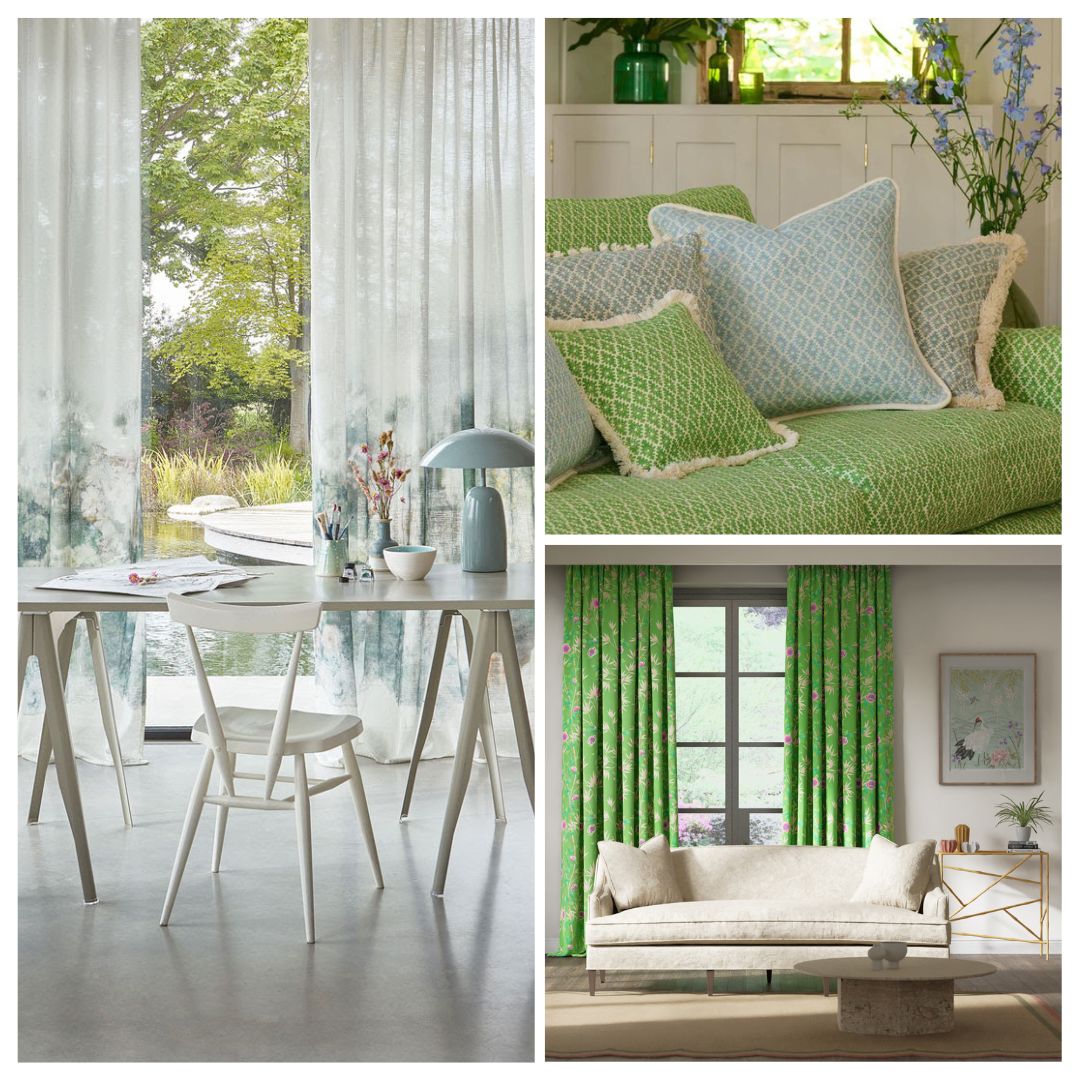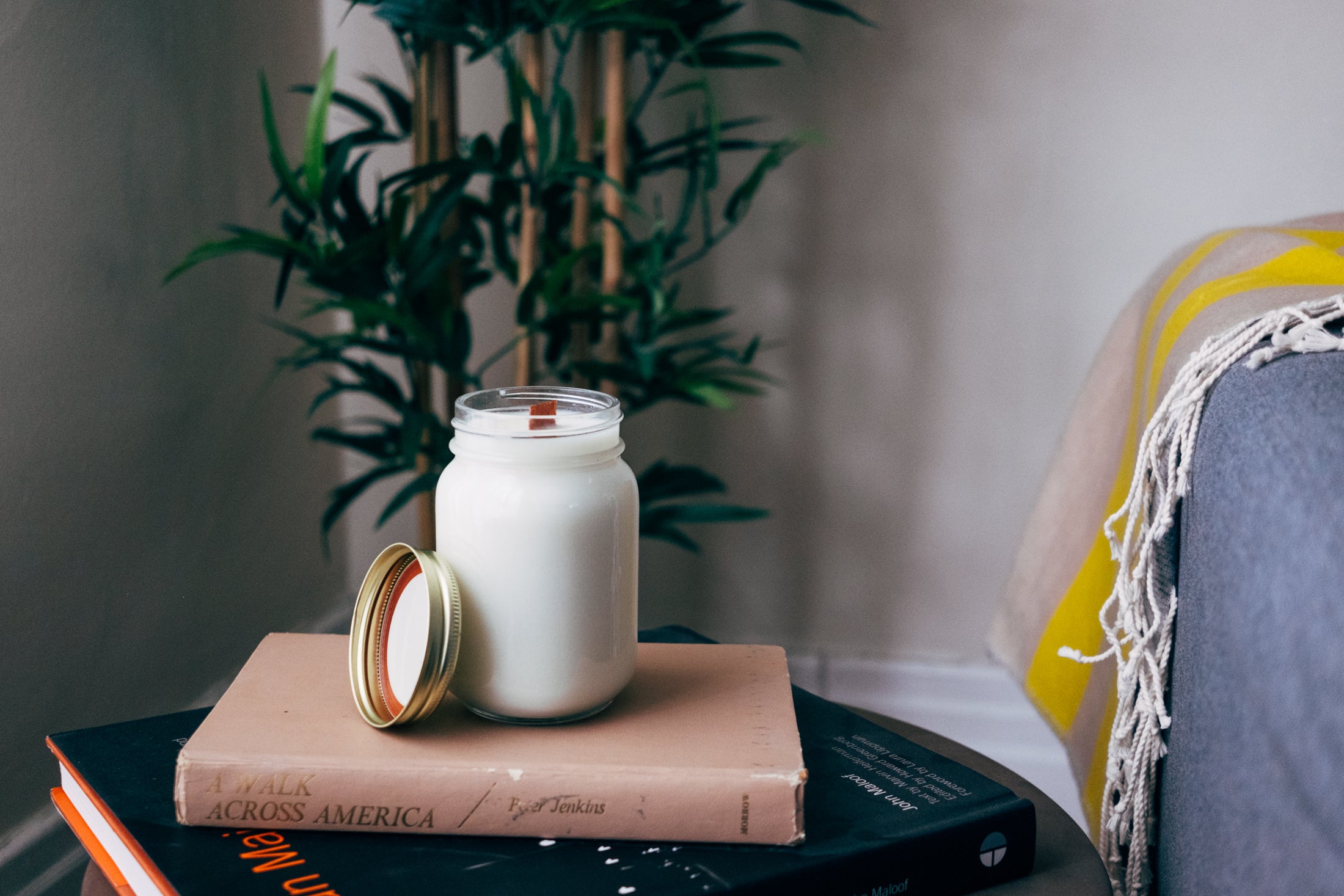Greenery Galore: Tips to Incorporate Green Colours and Fabrics into Your Home

In the world of interior design, colour plays a pivotal role in shaping the ambiance and character of a space, grey tones have been dominant for a while now but among all the colours of the rainbow, green stands out as a versatile and invigorating choice.

From serene shades reminiscent of lush forests to vibrant tones evoking fresh botanicals, the colour green has the remarkable ability to breathe life into any room. And if you think about it, every colour works with green – if you can think of a flower in your chosen colour, a green will be very close by. In this blog post, we'll explore the captivating allure of green in interior design today and discover how to incorporate this timeless hue into your modern home decor.

Understanding the Psychology of Green:
Colour psychology looks at how colours make us feel; with colour divided into warm and cool tones, colours on the blue side of the spectrum are known as cool colours and include blue, purple, and green. These colours are often described as calm but can also call to mind feelings of sadness or indifference. *
Green is obviously associated with nature but also growth, and harmony, making it an ideal choice for creating spaces that feel tranquil and rejuvenating. Different shades of green can evoke varying emotions and moods and thinking about the seasons of the year helps to relate to the different shades: bright zingy yellow/green of new shoots in spring, maturing to deeper greens throughout the spring and summer and turning to olives and browner (warmer) tones by autumn.
- Soft pastel greens promote a sense of serenity and relaxation, perfect for bedrooms or meditation spaces but avoid in north facing rooms.
- Vibrant emerald greens inject energy and vitality into a room, ideal for accent pieces or feature walls or kids playroom accent colours.
- Olive greens exude warmth and sophistication, adding depth and richness to a space; good for creating cosy and intimate spaces.
Understanding the psychology behind each shade of green empowers you to use colour strategically to achieve your desired atmosphere. The symbolic meaning of green is nature, growth and freshness but remember that this might not be what you feel when you see a colour. If you wore green as a school uniform you might find that you have a complete aversion to it!

Incorporating Green Fabrics:
Fabrics play a crucial role in interior design, adding texture, depth, softness and visual interest to a room. Consider adding green with lush velvet sofas, soft floaty linen curtains or go bold with tropical botanical-printed cushions – all can infuse your space with the refreshing vitality of nature. Mixing green accessories can create focal points and by adding a metallic element can add a touch of luxury to your interiors.

Creating Green Colour Schemes:
When incorporating green into your interior colour scheme, it's essential to consider complementary hues that enhance its beauty:
- Pairing green with neutrals like white or beige creates a timeless and sophisticated look, allowing the green accents to pop, especially if you choose a brighter green.
- Combining green with analogous colours such as blue and yellow fosters a cohesive and harmonious palette inspired by natural landscapes.
- For a bold and dramatic statement, juxtapose green with complementary colours like pink or coral for a vibrant and eclectic vibe.
Experimenting with different colour combinations allows you to personalize your space and express your unique style.

Bringing Greenery Indoors:
Beyond paint and fabrics, houseplants have seen a revival in popularity since lockdown and with claims that they help to purify the air** incorporating living greenery is an excellent way to introduce the colour green into your interiors. Oversize plants create a statement as well as allowing you to have fun with the container they are in as well as where in the room works best – and remember the revival of macrame, hanging plants are back again too. Consider adding potted plants, succulents, or vertical gardens to infuse your space with the refreshing vitality of nature.

In conclusion, the colour green holds a special place in interior design, offering a myriad of possibilities for creating inviting and harmonious spaces. Whether you opt for soothing pastel greens, vibrant emerald hues, or earthy olive tones, incorporating green into your decor can transform your home into a serene sanctuary inspired by nature's beauty. By understanding the psychology of green, experimenting with fabrics and colour schemes, and embracing greenery indoors, you can harness the transformative power of this timeless hue in your interior design endeavours. Embrace the colour green and let it breathe new life into your home.

* Source: https://www.verywellmind.com/color-psychology-2795824
**In a poorly ventilated small office with high levels of air pollution, they calculated that five houseplants would reduce NO2 levels by around 20 per cent. In the larger space, the effect would be smaller – 3.5 per cent, though this effect would be increased by adding more plants. Source: University of Birmingham https://www.birmingham.ac.uk/news/2022/common-houseplants-can-improve-air-quality-indoors
